The online market for goods and services has been in a state of constant competition for years, attempting to beat the competition with lower prices and faster service time since the inception of Amazon Prime.
Today, the biggest differentiating factor your business can adapt to is providing an exceptional customer experience. In fact, 86% of buyers will pay for a better customer experience, and over 45% of business professionals have shifted their top priority toward improving their customer experience rather than lowering pricing or improving their products.
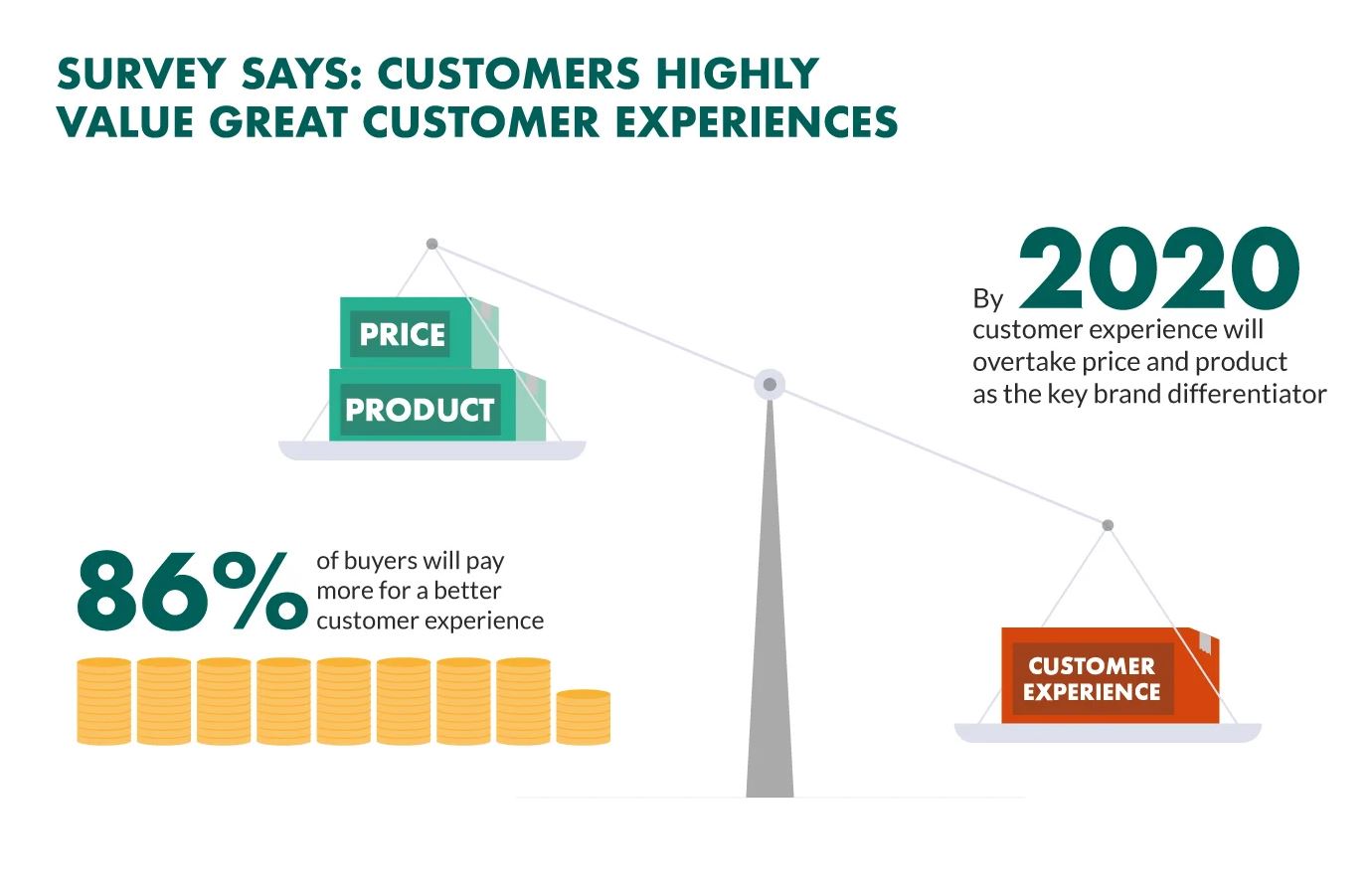
So what is the best way to improve the buying experience?
Well, much like any relationship, a customer relationship is at its best when customers can get to know your company. What better way to achieve that than through direct and intimate conversation in real-time?
In this guide, we will explain a tactic referred to as “conversational commerce”, and cover the many benefits it can bring to your business.
Table of Contents:
- What is Conversational Commerce?
- How Does Conversational Commerce Work?
- The 4 Types of Conversational Commerce
- 3 Examples of Conversational Commerce
- Conversational Commerce in Your Marketing Strategy
- Benefits of Conversational Commerce for Customer Support
- Getting Started With Conversational Commerce
What is Conversational Commerce?
Conversational commerce is an omnichannel communication method in which online retailers utilize chat, conversational AI, and voice-based conversation to sell their products or services directly to the consumer.
The medium of delivery ranges from chat and SMS messenger apps to voice assistants (Siri, Alexa, etc.) and artificial intelligence, but the most important trait is personalizing the communication in a way that leaves the customer with a positive and simple shopping experience.
The primary goals of conversational conversation, or chat commerce as it has otherwise been referred to, are:
- Ensuring that the customer feels as though they were properly guided or assisted through the buying process
- Moving them through the purchase funnel, reminding them with notifications via direct chat
- Introducing them to products they were otherwise unaware of
- Providing additional support and recommendations after the purchase has been completed
The marketing trend has become more popular in the past decade as a response to the rapid growth and public adoption of chat and messenger apps worldwide, and a market that wants to capitalize on that adoption.
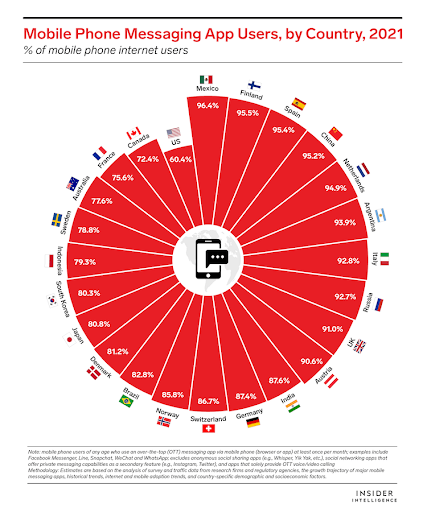
Meeting consumers where they already are, on chat apps, allows the business to get ahead on potential customers and personalize the sales process to the user, something that other marketing strategies are unable to do since they cast a wide, impersonal net.
Consumers and businesses see a mutual benefit in this form of marketing, as chatting with an agent or even just a chatbot can improve the information on products and services you get, answer questions not in the FAQ section, and forge a relationship between the consumer and producer that improves sales metrics as well as customer satisfaction and brand confidence. The latter is one of the golden geese of marketing, as a more satisfied customer is more likely to return to your business, and it is easier to support and maintain loyal customers than it is to acquire new ones.

How Does Conversational Commerce Work?
So, now you’re probably wondering how this tactic actually works in practice, and how you can integrate it into your marketing and/or customer service strategy. Before strategizing how it would work best for you, it’s essential to understand how it works throughout the steps of purchasing a product or service online.
Conversational commerce improves the ability of a business to connect with their customers at each step along their purchasing journey by putting the customer and business in direct contact through a variety of channels. It works by making use of conversation through chat and messaging, utilizing automation in some cases, to assist a customer through the customer journey.
The purchase journey and consumer relationship is split into five main sections:
- Awareness
- Consideration
- Decision
- Retention
- advocacy.
Conversational commerce allows businesses and consumers to connect at each step along this journey, improving the relationship and increasing the likelihood of customer satisfaction.
Awareness
The first phase of the journey occurs when a customer recognizes that they have a need for something, whether it be a product or service, and so they look to fulfill that need. In the process, they discover your offering or online store and may either seek to connect or require your inquiry as a business directly.
Building a relationship with customers and improving your brand recognition is important, and about 59% of shoppers prefer to buy products from brands that are familiar to them, so getting ahead of this will improve familiarity and provide a better experience. Showing customers that you understand their needs through a personal, 1-on-1 dialogue is likely to lead to better customer retention and conversion rates as a result of boosted consumer confidence in your brand.

Consideration
Once the customer has decided on what product or service they are in need of, they will begin seeking information to determine which solution is best for them.
Conversational commerce allows you to answer their specific questions and concerns, providing them with information that a web page or forum can’t, increasing the likelihood that they consider you over a competitor. This is also compounded by the trends of online shopping shifting more and more toward mobile platforms, with 79% of smartphone users having made a purchase online using their mobile device, and the seamless connection that can be formed using chat apps on those very same devices.
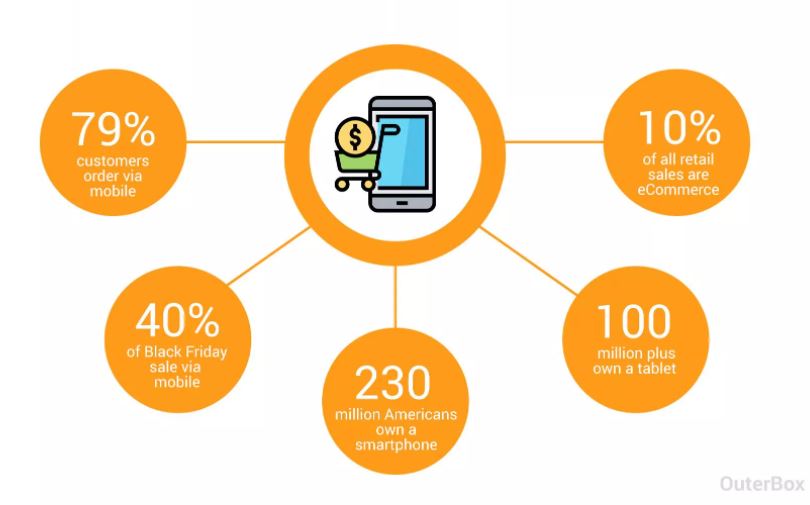
Decision
Once the customer has gotten the information on products and services they are considering, they will evaluate those options based on some key criteria including but not limited to price, quality, benefits/performance, and trust in the brand.
By communicating directly with a customer in this stage, trust in the brand is immediately bolstered and the likelihood of gaining a loyal customer increases. This also presents opportunities to make the sale, or even cross-sell, by offering different pricing options, explaining features and details, and reassuring them of the quality of your product or service with a conversation that feels personal and legitimate.
Retention
At this stage in the buyer’s journey, the customer is ready to finalize the purchase, but that doesn’t exactly mean that they will cross the finish line. As many in the eCommerce world know, cart abandonment is rampant and is one of the leading causes of reduced or underperforming conversion rates. The figures are often staggering, with an average desktop abandonment rate of around 73%, and a mobile abandonment rate of close to 86%. This represents a major gap in the sales funnel.

Reminding your customer about the product with a simple text message and talking them through the decision to build confidence will help them cross the finish line, and you can employ other marketing tactics in a more integrated and personal manner such as offering deals, coupons, and other incentives directly to the customer, making them feel valued.
Advocacy
After the customer has made a purchase, the journey is not yet over. Buyer’s remorse is a very real concern and can impact your brand’s trustworthiness and overall visibility, so ensuring that you instill a sense of confidence in your brand through communication with customers can improve their satisfaction and lead to brand loyalty through good reviews, personal testimonies, and sharing your products with others.
Conversational commerce allows you to better ensure that your customers and clients reach this phase with a sense of satisfaction, which can make a world of a difference in your bottom line. It’s estimated by Harvard Business Review that it is anywhere from five to twenty-five times more costly to acquire a new customer than it is to retain a current one, so providing special care to your customers can save you time and money in the long run.
The 4 Types of Conversational Commerce
The benefits of conversational commerce are overwhelming, and how it can assist your business in increasing conversions and retention is clear, but what specific types of conversational commerce platforms are there? Which one is right for the goals you have set for this strategy?
Here are some of the most common examples of conversational commerce that you can use in your business communication channels.
Live Chat Software
Live chat software is a common feature of most eCommerce websites these days as it allows customers to get quick and clear answers through your site without needing to submit a form, send an email, or make a call, all of which can result in cart or site abandonment.
Live chat can be reactive or proactive in nature, by either presenting itself as a “here if you need me” type of service, or even proactively reaching out when a customer lands on your website with a friendly greeting to offer assistance and guidance in the process.
Live chat software also enables one agent to field multiple cases rather than being confined to one call at a time. This reduces the wait for customers, increasing their likelihood of sticking around and moving through the purchasing journey.
There are a variety of free live chat platforms to choose from, but the most important aspect is how you utilize and program them for the functions you desire on your website.
Chatbots
For smaller businesses with reduced customer service capacity, or products and services with a more straightforward purpose or offering, chatbots can adequately fulfill the purpose of conversational marketing by answering commonly asked questions. Simple queries like order status, comparable products, and case resolution can be automated to chatbots, and the more advanced versions may even include conversational AI to further personalize the experience.
So what’s the better choice, chatbots or live chat? The benefits beyond live chat can be immense, since chatbots don’t require a live agent to be on the other end, allowing for 24-hour service with less effort and resources required on the side of the business.
Messaging Apps
The utilization of common messaging apps like WhatsApp or Apple’s iMessage can be an excellent method of connecting with the customer directly. Customers are already using these platforms for their daily communication, so meeting them where they already exist can improve your chances of forging a relationship, especially considering that more users are connecting with businesses through messaging apps than they are through social media these days. Just be sure to maintain TCPA compliance when choosing this medium of marketing!
Messaging also provides a greater sense of security as many messaging apps utilize end-to-end encryption to secure their chat data, where a social media page is open to the public and other businesses to scrape data from. Security is important to any business, and the same goes for the customers, so be sure to select the best business text messaging provider for your needs.
Lastly, messaging apps help form a connection that can be more casual and lifelike through common messaging media like gifs and emojis. This creates an emotional bond between you and the customer, which can result in a customer spending up to twice as much with your business as one who felt no connection. While cold-calling can still be effective, each call takes up the entire attention of your employee and can consume more time as opposed to marketing and engaging with customers via SMS messaging.
Voice Assistance
Voice assistance software, like Siri, Alexa, and Google Assistant, are growing in popularity thanks to their convenience and ease of use. They also provide a sense of engagement and fun in the information search that consumers go through which can help to lighten the mood and improve the likelihood of an emotional bond to your brand.
Voice assistants can offer immediate answers to voice commands and are growing in popularity among businesses looking to improve customer relations by answering questions quickly and succinctly, driving that user to your site, and granting you the opportunity to further connect with them.
3 Examples of Conversational Commerce in Action
So now that we have an understanding of conversational commerce and its many uses, let’s take a look at some examples of it in practice on some common websites you may have visited, or services you may have utilized.
Amazon Alexa

I’m sure many of you reading this article have either directly or indirectly encountered the all-knowing “Alexa” at some point, and have likely noticed the utility in Amazon’s voice-activated assistant. From a simple question to a shopping query, Alexa can handle almost anything you ask her at a surface level.
Alexa can Google things for you, pull up and fill a shopping cart through Amazon (and complete purchases if you link payment information), connect to other apps and hardware such as a home sound system to play music, and more. It’s a utilitarian tool for the household, but what it succeeds at most is shopping assistance – it is a voice-activated virtual shopping assistant.
Platform: Voice assistance via speaker and microphone
Benefits: Convenient, fast, great for multi-tasking
Why it works:
- Makes shopping easy, which makes selling easy for Amazon
- Hands-free technology allows for convenience and multitasking
- Seldom fails to understand your questions, making it very easy to use
Starbucks
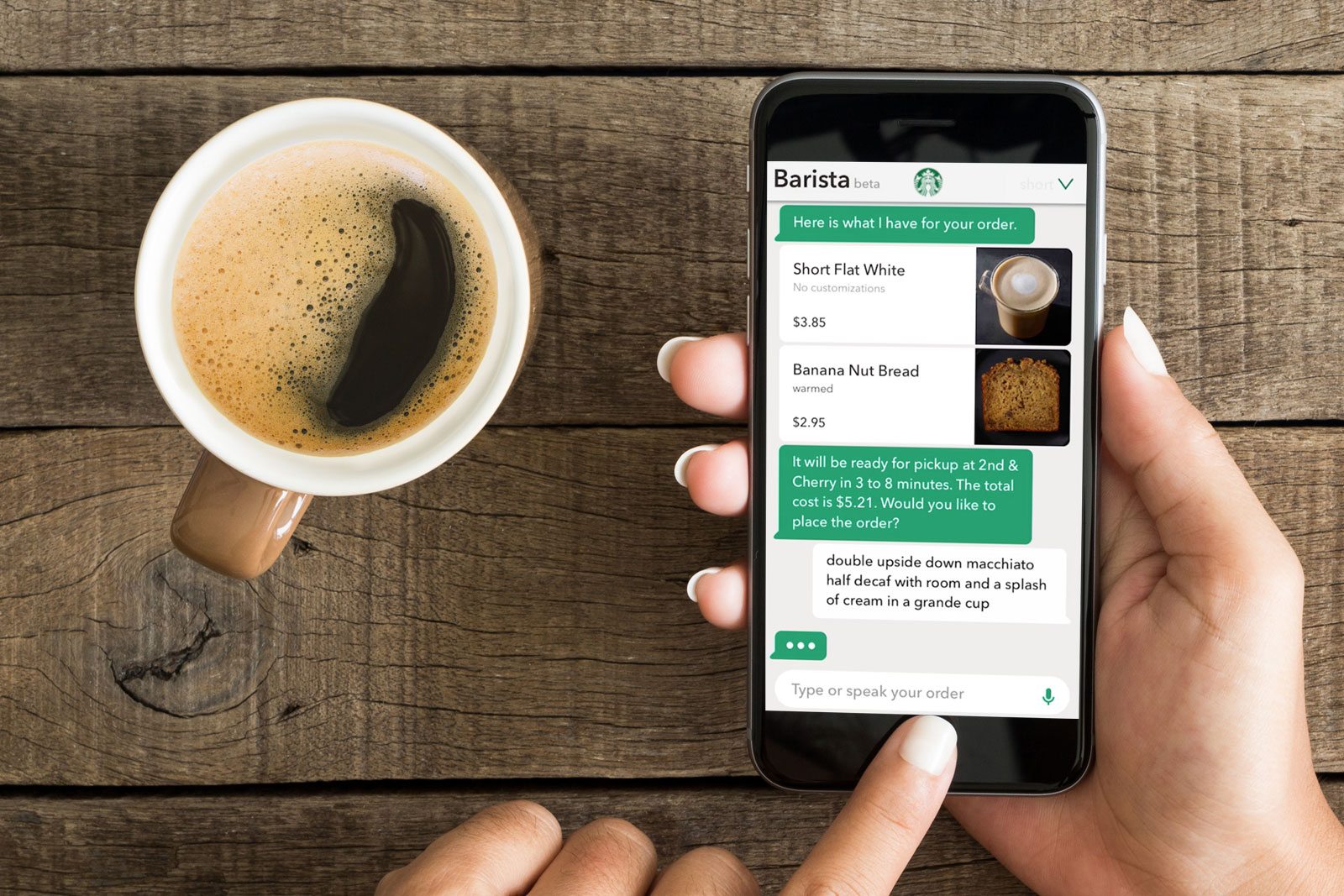
Starbucks has used its app to solve one of the biggest problems in your average worker’s morning: coffee lines. Through their app, you can message with a “virtual barista” to put in an order, and get the experience of speaking with a human in a sense by adding whatever quirks you enjoy in your morning beverage.
The message-based ordering system allows for voice commands to place an order, texts, and payment through their device to fully streamline the process. Once complete, you get a message when your order is ready and can skip those long lines!
Platform: mobile app, text message format
Benefits: fast service, customizable orders, and notifications of order completion
Why it works:
- Adds convenience to the customers’ morning
- Multiple methods of ordering, from text to voice command
- Payments are linked, further adding to the convenience
- Connects you with local stores before beginning the ordering process
H&M

H&M takes conversational commerce to the next level through proactive conversational marketing. Contacting potential and returning customers via the messaging app Kik, H&M utilizes a chatbot to market new products, sales, and related items to what the recipient may have been recently viewing.
The chatbot works in the same way an in-person stylist or sales associate works when visiting a brick and mortar store, providing recommendations and working with the users’ preferences based on a few questions. Another feature akin to shopping in-person is the ability to see what other chatbot users have created or amalgamated, and then vote on them! Just like seeing someone trying on a pair of pants that catch your eye, the experience of others can be used to influence a sale.
Platform: Kik Messenger, Chatbot
Benefits: mimics in-person shopping, casual
Why it works:
- Allows for a lot of user interaction, which allows the business to collect more data to accurately market to those users
- It has a very personalized feel, making the virtual shopping experience feel like you have a human guiding you on the other end
- The casual nature of the chatbot conversations makes it easy to do on your own time and maintain convenience in a busy day
Conversational Commerce in Your Marketing Strategy
There are a number of ways that conversational commerce can assist your marketing and sales teams. Chatting with customers is the oldest sales tactic in the book, but online chat can be more tricky and may require a more nuanced strategy than just sparking up conversations at networking events with a stack of business cards in your pocket. Here are a few proven methods for improving your marketing strategy with conversational commerce.
Proactive Live Chat Integration
Live chat can serve many functions on your website, but one clear benefit is the proactive use of it to connect with potential customers and guide them through the purchase process. Using an agent, you can connect with your customers directly and inform them of related products, or even just details that the customer might be seeking, which is likely to garner favor for your business and increase trust in product recommendations.
In addition to the immediate value, it’s important to note that most live chat software integrates directly with your CRM software, allowing you to collect responses from these sessions and create a better customer profile.
Some examples of great live chat software include:
Chatbot Integration
Chatbots offer a similar solution to live chat with the added benefit of being automated and easy to use, making them ideal for small businesses or sites without a dedicated customer support center. Chatbots can answer basic queries and perform common site functions such as recommending similar products or addons, all while still contributing to the forging of a strong business-to-customer relationship. Some examples of quality chatbot services include:
Direct Chat and Messaging Promotions
Whether it be through social media or messaging apps like WhatsApp and Facebook Messenger, direct outreach can be an effective way to promote products and services that your consumer might not be aware of by their own research. Furthermore, this type of marketing will allow your customer to reply with questions directly, and as mentioned above, they can do so in a way that feels authentic and honest, creating a better chance that this customer will have a positive experience and return to your site.
Some common tactics for marketing through chat and messaging apps include:
- Delivering content such as new products, deals, and other customer testimonies
- Reminding customers of an abandoned cart once they have created an account or have placed past orders
- Providing additional product information or incentives on a product that the customer has viewed or added to a cart, but has not yet purchased
Benefits of Conversational Commerce for Customer Support
Customer support is an essential aspect of any successful business, and as mentioned above, client/customer retention is vital to business growth and protecting your bottom line. There are a few known issues in the customer service world that are worth getting ahead of, so being on top of these problems with proactive and informal communication can mitigate or prevent many of the problems. There are few things as frustrating as being unable to find help with a product or service, but conversational commerce platforms and integrations simplify the process for both the customer and your team.
Live Chat and Chatbot Support
Often times customers will narrow down their choices to a few options, and then get stuck and require assistance in the form of additional questions or details. Live Chat and Chatbot services fill this niche quite well by providing immediate support that might help them to make a decision and move through to checkout. It can even be done effectively through your social media channels, making the conversation feel even more personal. The benefits mostly have to do with reducing cart abandonment, since if you can catch your customer live while they’re still on the site, they are less likely to bounce away and leave an unfulfilled cart.
Direct Messaging for Support Cases
Some products are simple and require little attention once the sale is made, but others, especially services, can sometimes have additional upkeep once the sale has been made. By reaching out to a customer who opened a support case for your product, you can quickly and efficiently resolve the issue while leaving the customer feeling as though they’ve truly been given the attention and care that sets you apart from the competition or massive online retailers.
Task Management and Reminders
This aspect of conversational commerce is more applicable for businesses selling a service, but it can work for product sales as well depending on the situation. Rich Communication Services like Google’s Business Messages allow you to seamlessly set up appointments for consultation, collect a payment, and suggest fixes and other products all through an easy-to-use messaging platform that will leave your customer feeling supported and valued.
Getting Started With Conversational Commerce
So you’ve learned what conversational commerce is, and how it can improve myriad aspects of your business strategy, but how can you actually get started with it and start seeing the results for yourself?
Like any marketing strategy, the first step in getting started with conversational commerce is to analyze which method fits the needs of your business. Whether you need to reduce shopping cart abandonment to improve conversion rates or increase client satisfaction, there are different methods for different needs. It is highly important to make sure that the methods of conversational commerce you choose to implement are aligned with your marketing and sales goals so as to not come across as spammy or annoying to the consumer. Here are some high-level tips on getting started and formulating your strategy:
- Research which platforms work best for your budget and needs, and set benchmark goals to track the performance of the strategy chosen
- Compare your conversational commerce strategy with your competitors
- Find the right conversational commerce platform for your budget, needs, and capabilities
- Set Key Performance Indicators (KPIs) before starting your strategy in order to track how well it’s working for you
Conversational commerce can be an immensely useful tool for your business whether it be for marketing, customer service, or sales. It will take some time to properly tune your strategy and get the hang of being in more frequent contact with your customers, but the payoff is worth it. Fostering strong customer relationships is invaluable in a market with countless options, and can be the difference that allows your business to truly thrive. Get to know your customers, and your brand will grow!

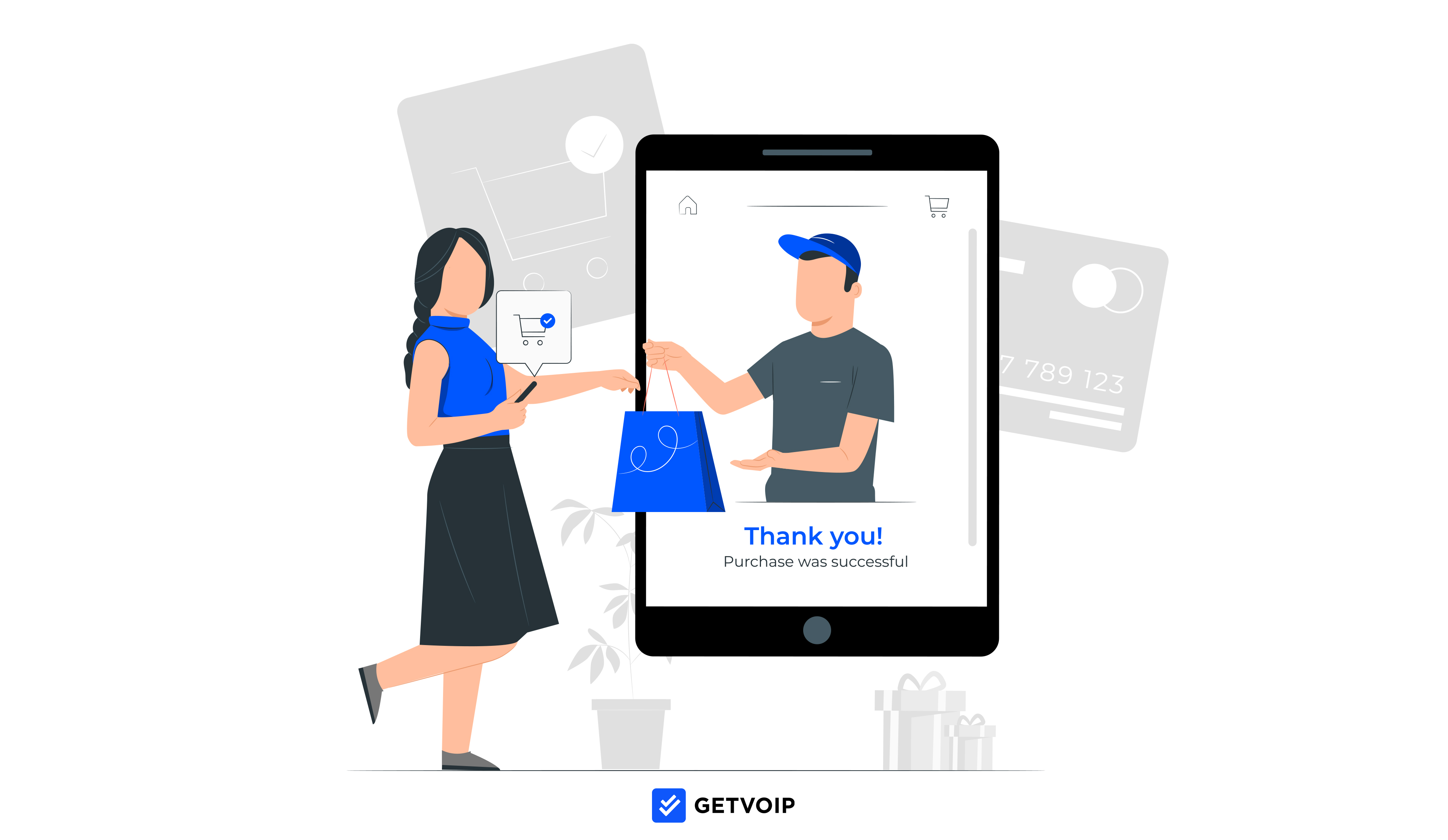




![What is Omnichannel Customer Service? [Benefits & Tips] What is Omnichannel Customer Service? [Benefits & Tips]](images/omni-channel-explained-350x203.png)

